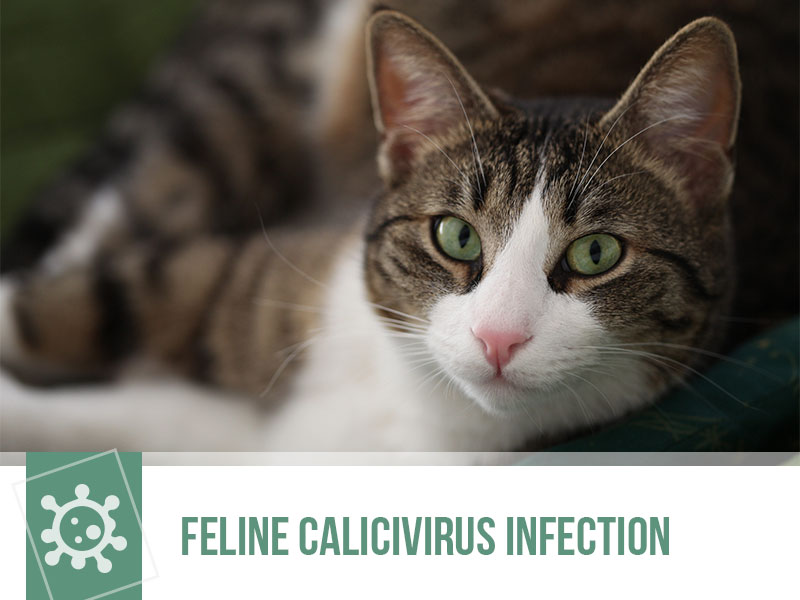
Feline Calicivirus Infection
This virus causes a common respiratory disease in cats, usually with upper respiratory tract signs. The agent that causes this pathology is a single-strand RNA virus with several serotypes that usually cause similar clinical signs.
Of the cats that are infected, some will remain persistent carriers and these will go on to infect other cats by shedding the virus in variable quantities. It's particularly troublesome in multi cat facilities like pounds, catteries, colonies or houses with multiple cats.
It affects chiefly kittens older than 6 weeks but cats of any age may show signs of illness. It might cause ocular and nasal discharge with little to no sneezing, with characteristic crusts around eyes and nose. Kittens might be reluctant or stop eating altogether due to painful ulcers in the palate, tongue or lips. Generally, patients will be alert and in good body condition.
Uncomplicated infections are relatively simple to resolve, usually resolving within 3 to 5 days. Complications may arise from opportunistic infections that will use the fact that the virus has damaged the normal integrity of the airways and settle in with much less impediment. Complicated cases might evolve into severe pneumonia that requires a much heavier medical intervention than an uncomplicated infection and they tend to present with fever.
Vaccination is an important cornerstone in the management of this pathology. The vaccine for the Feline Calicivirus is considered a core vaccine and should be given to all cats, as early as 6 weeks. In colonies with severe issues with this infection, kittens may be vaccinated a little early. If you feel your colony or cattery are at a higher risk, ask your vet about the best protocol for your particular situation.
Would you like to know more about cats? Check our Feline Courses:
Feline courses
Read the previous article: The dangers of rock salt


